Every Astronaut Works For the Future of Earth
Szöveg: Ádám Draveczki | 2008. május 29. 13:49The first Hungarian astronaut, Bertalan Farkas went into space between 26 May and 3 June, 1980 in the framework of the Intercosmos Programme. We have interviewed the retired brigadier general on the occasion of the anniversary.
In 1978 there were lots of licenced fighter pilots serving in Hungary; among them 37 people were given the opportunity to participate in the examinations carried out by flight surgeons prior to the Soviet–Hungarian space flight. Yourself and Béla Magyari were chosen in the end. Why?
This question is quite simple: in that situation, where we had passed a number of tests in Hungary, Moscow, and in Star City, based on the parameters, they had found that we were the best. It was an unbiased selection and it did not matter who-is-what, if someone’s father or mother was a secretary of the party or a deputy minister or not, they had focused on mental-physical preparedness, furthermore professional knowledge and experience. The physicians had done a very responsible job.
To what extent were the tests carried out on you different than the usual fighter pilot examinations and tests?
You couldn’t even compare them to the examinations we had passed earlier, since these covered everything. The aptitude testing of fighter pilot candidates starts around 17-18 years of age. Physicians must be able to identify in advance whether the selected candidate will be able to serve as a fighter pilot for several years, in other words, if his/her body is suitable for that. For the space flight we had to complete tests and laboratory examinations we couldn’t have imagined before, and these exams were not a mandatory part of the military aviators’ examinations.
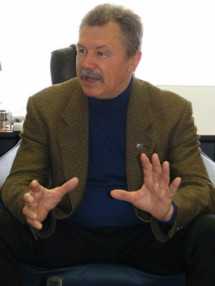
It had become obvious in a relatively early stage, but not in the beginning. We arrived to Star City in March 1978, and since our flight was scheduled for 1979 originally, similarly to the flight of the Bulgarians, they announced the names of the people they wanted to send out to space – that is the name of Valeri Kubasov and mine – in mid-December. The Russian–Bulgarian space flight wasn’t successful in the end due to an engine problem, they had returned in a day, and we weren’t allowed to fly until the technical issues were not investigated. Therefore we had a chance to spend another fantastic year in Star City, and could prepare for the space travel both technically and mentally. Since we were fighter pilots the operation of complex aviation equipments was not unfamiliar for us, but space flight, and the work done at the space station is a totally different field. As regards this, we were in a lucky position again. The so-called ‘standby couple’, Béla Magyari and Vladimir Dzhanibekov were preparing for the travel parallelly with us, since space flight is an unbelievably expensive thing and a flight scheduled in advance cannot be postponed because we – either myself or Kubasov – have a problem. In this case, they would have flown. The decision was confirmed by the state committee in the evening before the flight.
How important was it during the travel that astronauts are ’tuned in’ to each other?
It is always important and perhaps it is even more interesting today, since the number and the nationality of the crew members serving onboard the International Space Station varies, they all take their own culture and traditions with them. We have to think with the brain of the other and be able to realize the ideas of the other, as well. I was extremely lucky since Kubasov is an unbelievably experienced, highly prepared cosmonaut, who had been to space in 1968 for the first time, what is more, he was the first man to weld up there, which was a significant milestone in the technical progress. In addition to that, he was launched into space as the flight engineer of the first international spaceflight with Alexey Leonov in 1975 from Baikonur, within the framework of the Soyuz–Apollo programme, therefore they knew him well in the United States too, because this exemplary flight was considered one of the important events of the political détante. It made things easier for me, too, wherever we showed up together.
Do you still keep contact with Kubasov?
Yes, we do, we have met several times this year only, we are very-very good friends. With him, and with the other astronaut colleagues, too. Last November we held the congress of the international Association of Space Explorers in Scotland, and this year’s event will take place in the United States in October.
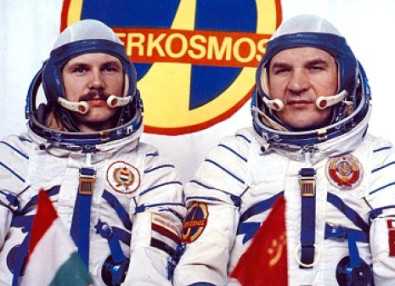
In Star City we got into an environment where everyone who worked there knew that we are to go into space soon, therefore they helped us in everything to the maximum extent so that we could provide the best performance. It was a wonderful experience to feel this solidarity. From the specific exercises I remember two the most. Now, years later, I smile when I think about them, but they were extremely difficult situations: the survival tests, the swamp and the marine versions. The latter was more complex, they had even asked us before the task if we undertake it or not because the sea was very rough, but should we wanted postpone it, it would have modified the whole programme in Star City. I had never been in a situation like that before in that landing unit: they have precisely remodelled the conditions of a spaceship landing on water, and I have to tell you that compared to this landing test the whole programme seemed to be simple. The seamen had specially congratulated us following the test.
Do you remember what you had on your mind when you went to sleep last night – provided you fell asleep at all … ?
I just packed my things, wrote a letter, after that we took a walk with Valeri, then we watched the constellations with Béla. I returned to my room, where there were two sleeping pills prepared for me. ’Uncle’ Vanya, my doctor asked me how I was feeling, and told me to take the pills if I think so, but I forgot about this, I didn’t need them. When I woke up in the morning there were doctors surrounding me and for a moment I did not even know where I was. It was a very exciting day, but neither the physicians nor the engineers did leave us a free minute, they occupied each second for us, for which we were grateful and felt absolutely well. And the time up to the start has its unique choreography: first we spend a few second in total silence, then we have to pass a door, which is signed on the inside by everybody who gets onboard.
Which was the moment when you felt that you are really up in space?
In the moment when the spaceship separated from warp three. By this time we were above the Pacific Ocean, at an altitude of 240 km, reaching first cosmic speed, 28,000 km/h. I believe I had time to think about it up in the space station only, since one cannot relax during takeoff and connection – these operations require unceasing, attentive concentration. Up there in the space station we had more time, though only slept 4-5 hours a day, but we had a chance to indulge in space for the first time: there was the Earth on one side, an unbelievably beautiful sight, and on the other side, that endless universe, which is completely different, too, if one’s viewing it from above. For instance I did not recognize the constellations in the beginning: even a 5-year-old child knows Ursa Major and I had to ask my cosmonaut mates to show it to me. When we had a so-called solo night for ourselves, I sat in the spaceship and just took delight in what I saw. The duality was interesting: I was watching the Earth and thought how wonderful it is that humankind is capable of so much. Then I looked to the other side, into endless space, and the first thing that came to mind was that there are so many questions we still cannot answer.
The work you had done up there has a relatively low publicity, in spite of the fact that it involved some groundbreaking experiments as well.
Many people thought that it was a military programme, but we were engaged in a space research with absolutely peaceful aims within the framework of Intercosmos. For example I was the first to use Pille, a device for measuring cosmic radiation, in space. Since then this device has been onboard each space station, what is more, it had been taken out for a spacewalk. There was a Soviet experiment of which I am proud as an astronaut: the space station and the two spacecraft connected to it were orbiting in a flight path where there was cosmic daytime for two whole days. I can say that the Sun „had seen us", one side of the space station and the spaceships were bathing in sunlight all the time, thus there was plus 120-140 Celsius degree, and on the other side the temperature was the same in minus degrees. This difference in temperature causes deformation. The space station consisted of four blocks and each spaceship consisted of three blocks, and we had taken a separate equipment with us to measure deformation. As a result of these experiments the laboratory currently operating in space was constructed from lots and lots of modules. I am proud that as a Hungarian astronaut I, too, could contribute to this.
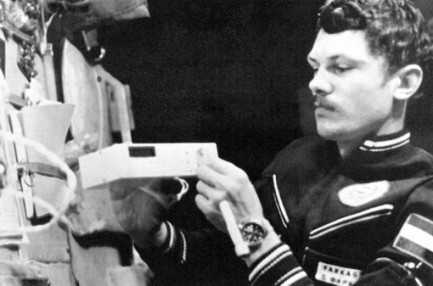
Did you happen to have an uncomfortable or scary experience, or have these moments faded away besides the beautiful moments?
There is always an unexpected, unscheduled event occuring during each flight. In our case landing was significantly worse than we had planned in advance, since the four small microengines installed in the bottom of the landing unit failed to work. The desert was very hard and we fell very heavily. Inside the landing unit there is a device the function of which is exactly to absorb the kinetic energy. This telescopic rod consists of three rings and we had passed all three: this meant 45-50 times the usual overload for our bodies, which is very much. The first two nights the physicians were beside me but we found out soon that my spine was not hurt and my internal organs had „stayed in their place".
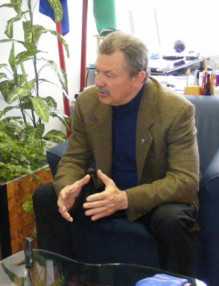
He found a more elegant solution for this story. When we returned home they held a gala dinner as a tribute to us, where János Kádár and also Lajos Czinege, the Minister of Defence of that time were present. Kádár proposed a toast to us, congratulating our excellent achievement, wishing us the best, then he said: „You, Comrade Farkas, are a national treasure". This was interpreted by Czinege in a way that once I was a national treasure, I shouldn’t fly. Before my space flight nobody ever mentioned anything like imposing limits on me. In the first 3-4 years it was understandable that I didn’t fly, since we got loads of invitations and many people wanted to meet us. In the framework of a military programme we have toured the barracks and military dormitories all over the country, and it was the most natural thing in the world for us. And in addition to these programmes there were the initiations of civilians as well: schools, cultural centres, and – naturally – the vast number of socialist brigades named Bertalan Farkas … When this period ended, it happened that whenever I was abroad we set off for an airport of any kind with our colleagues, and we just went for it: we flew either an airplane or a helicopter a bit. Once I couldn’t fly in Hungary, I tried to make up for what I’d lost at home, when I was abroad. Of course, I wanted to get back on a supersonic aircraft again, but after the change of the political system I had realized that those guys have to fly who were indeed sitting on the edge of the cement to protect Hungarian borders and airspace. Luckily enough, in that period I was given the opportunity to take off with AN–24s and AN–26s. I have been a pensioner for 11 years now, but whenever I come across an airport I still find a way to fly a bit. I have never truly been ’out of practice’. Once you fall in love with flying, it will last for a lifetime.
You got to the top at 30, and what is more, you did it in a field in which there are only a few hundred people in the world who can say the same. Wasn’t it difficult to process all this?
After my flight I felt a tremendous urge to fly again or to promote the flight of somebody else, for instance Béla Magyari’s travel. However, the Intercosmos programme had been restructured in the meantime and it had become an international scheme, and by the late 80s the changes in global politics could be felt. From that time on my dreams, too, started to wobble. If I go to Moscow today they always ask me when I will fly again, but this does not depend on me. It would cost several billions of Forints to fly agan as a space tourist or even as a professional astronaut funded by the state. In Hungary there isn’t a government which would fund this venture now. I would have liked to bring out the most from the knowledge I had mastered, but eventually it just happened that way. Fortunately, today I am not the only Hungarian who has been to space, since Charles Simonyi also had a chance to go up there as a space tourist.
What is your relationship like?
We had met several times even before his space flight and it was a fantastic experience when he thanked me for my help in Hungarian from space. I believe he is a great man and I am glad that he had completed the flight with success and he even had a good time up there.
This May will be the 28th jubilee of your space travel. Are there any events planned in Hungary for the anniversary?
No, there aren’t any, we are in Hungary. I don’t even expect anything. In foreign countries these things, too, work in a completely different way.
People still recognize you in the street, don’t they?
Yes, they do. And it feels very good.
There are only a relatively small number of people who know what you are doing these days.
Quite a lot of things. In the last quarter it is fair to say that I have spent more time abroad than at home: I have been to Moscow on several occasions, but I have been to the United States, too, furthermore I held presentations in Brussels, and went to Hong Kong upon a Chinese invitation. For instance in February I was elected a regular member of a Moscow-based security policy academy, and on the same occasion I was awarded a medal as well. So far there were only 230 people in the world who have been awarded this honour, and I was the 231st to receive it. I have come in contact with them via the ecological–climate change aspect of space research. Currently my most important job is related to the establishment of a foundation. The membership will consist of astronauts who had been to space, at the moment we are a team of 15, from 10 countries, and I do not want much more than that. I have the honour that among others, people like the current commander and deputy commander of Star City, or Vladimir Remek, the Czech astronaut, who is now a member of the European Parliament in Brussels, have joined the foundation. Our aim is to support young Hungarian people and young researchers who have completed their university studies, but in addition to that we would like to develop R&D and international liaising, as well. We want to give talented young Hungarian people an opportunity to educate themselves and to study. An institute will help the work of the foundation in this field. For me it is almost like a second space travel, since the task is similarly nice, complex, complicated and progressive. The other important thing now is the Chinese relation. I have entered their field of vision somehow, they have contacted me and I reckon it is highly important to be on good terms with them.
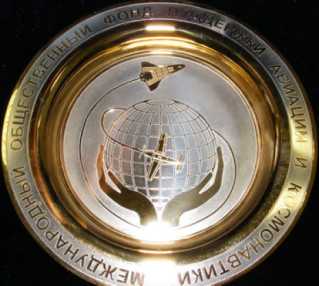
We haven’t got that far. At the same time it is not a secret that I would very much like to contact the Chinese space research institute, but they think in terms of a quite closed system and do not really let anybody near their space programme. On the other hand, China is expanding and it opens up huge opportunities for us in the field of importing and exporting various technologies. The country we are speaking about is not a couple of hundred years old, it dates back to several thousand years, and everyone should be aware of this.
Which direction do you think global space research is heading now?
The Chinese are implementing a special national programme: they work in secret and for the time being they haven’t joined the international space programme either. As regards the international team, the unfortunate disaster of Columbia hindered the full construction of the International Space Station, but the modules connected now are capable of executing serious, both biomedical and materials technology-related tasks. Astronauts commit everything to gain practical experience regarding the construction works ’up there’, which is very important since the first major enterprise seems to be the reconquest of the Moon and the establishment of a possible platform there. This may provide a starting point for further space travels. We are discussing highly complicated and costly ideas here and a lot of people question their existence, but space offers opportunities for us which are almost impossible to comprehend: we can find our way in the world with the help of pictures and maps taken from there, space technology enables us to speak with our friends in other continents easily and fast, and so on. It was not by accident that the foundation was named ’Space, for the Future of Earth’, for every astronaut works for the future of Earth in space.